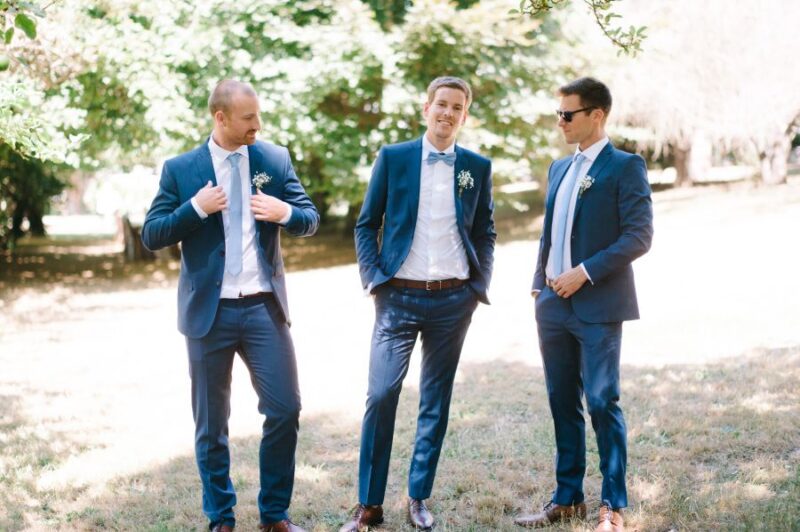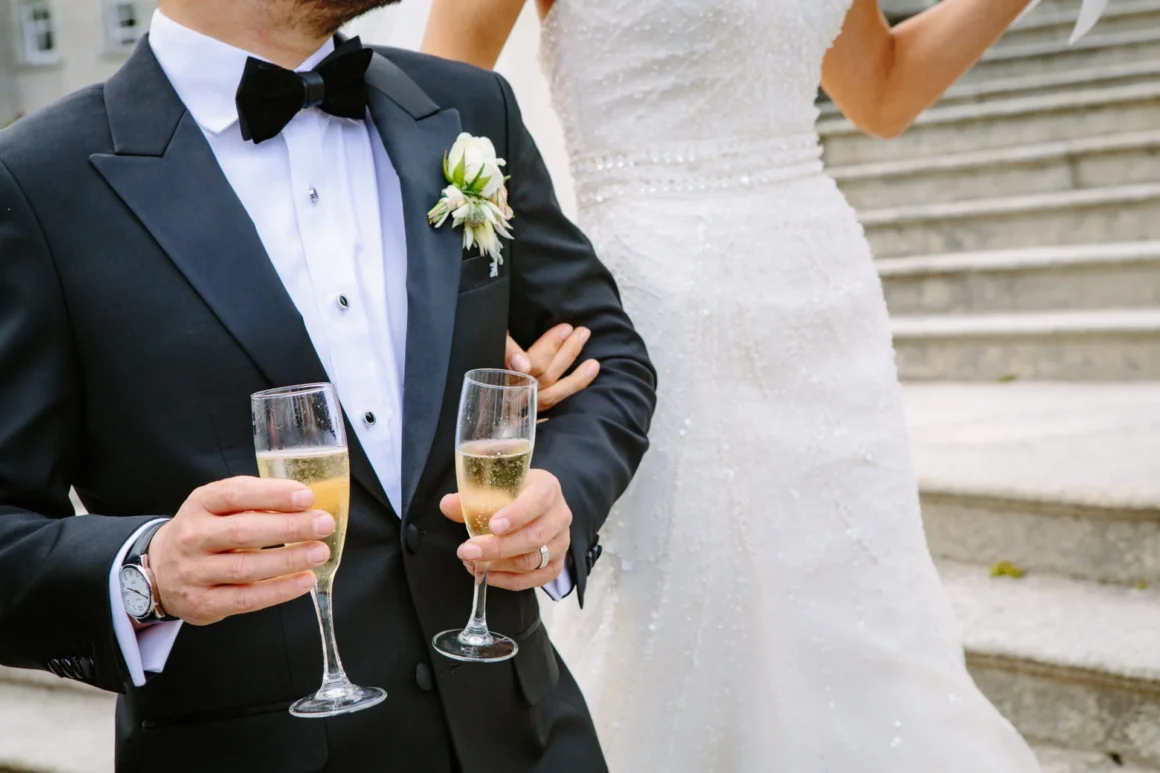The journey to the perfect groom’s suit begins with deciding on the style. Contemporary weddings offer a plethora of styles, ranging from classic tuxedos to more casual, personalized ensembles. The groom’s personality, along with the theme and venue, should guide this choice.
Whether it’s a beach ceremony calling for a lighter fabric or a formal evening event necessitating a classic tux, the style sets the stage for the subsequent steps.
Timeline Considerations
Once the style is determined, the timeline comes into play. Ideally, the groom should start shopping for his suit at least six months before the wedding. This timeframe allows for a relaxed selection process, fittings, and any necessary alterations.
High-quality suits, especially those requiring tailoring or custom design, can take several months to perfect. Last-minute rushes often lead to compromises in fit and style, detracting from the groom’s comfort and confidence on his big day.
The Role of Customization and Fittings

The Customization Process
For those opting for a custom suit, the process involves more than just selecting a fabric and color. Customization includes choosing the cut, lapel style, and even the type of buttons, ensuring the suit is a true reflection of the groom’s taste.
They also offer the advantage of a perfect fit, tailored to the groom’s measurements. The customization process typically requires multiple fittings and adjustments, hence the need for an early start.
Importance of Fittings
Fittings is crucial for men’s wedding suits, regardless of whether the suit is off-the-rack or custom-made. They ensure the suit is comfortable and flattering from every angle. It’s common to have at least two to three fittings: the initial fitting, a secondary fitting for adjustments, and a final fitting to confirm everything is impeccable. Grooms should also consider the season and potential weight fluctuations when planning fittings to ensure the best fit on the wedding day.
Final Preparations and Considerations

Last-Minute Adjustments
Even with careful planning, last-minute adjustments are often an inevitable part of preparing for a wedding. These adjustments, crucial for ensuring the groom’s suit fits perfectly, might include minor alterations to the hem, waist, or sleeves. These tweaks are particularly important if there have been any changes in the groom’s physique or if initial fittings reveal unforeseen issues.
A final fitting, ideally scheduled a month before the wedding, allows time for these adjustments without the added pressure of an approaching deadline. This proactive approach guarantees the groom looks polished and feels comfortable, making him ready to shine on his special day.
Accessorizing and Coordination
The final touches involve accessorizing and coordinating with the party. Ties, cufflinks, pocket squares, and shoes play a significant role in completing the look. Coordination with the bridesmaids’ attire and overall color scheme creates a harmonious aesthetic. It’s advisable to finalize these details at least two months before the wedding to ensure a cohesive and stylish ensemble.
Conclusion
In conclusion, planning for the groom’s suit is a significant part of preparations. Starting early, considering customization, and paying attention to the final details are key to ensuring the groom looks his best on this momentous occasion.


